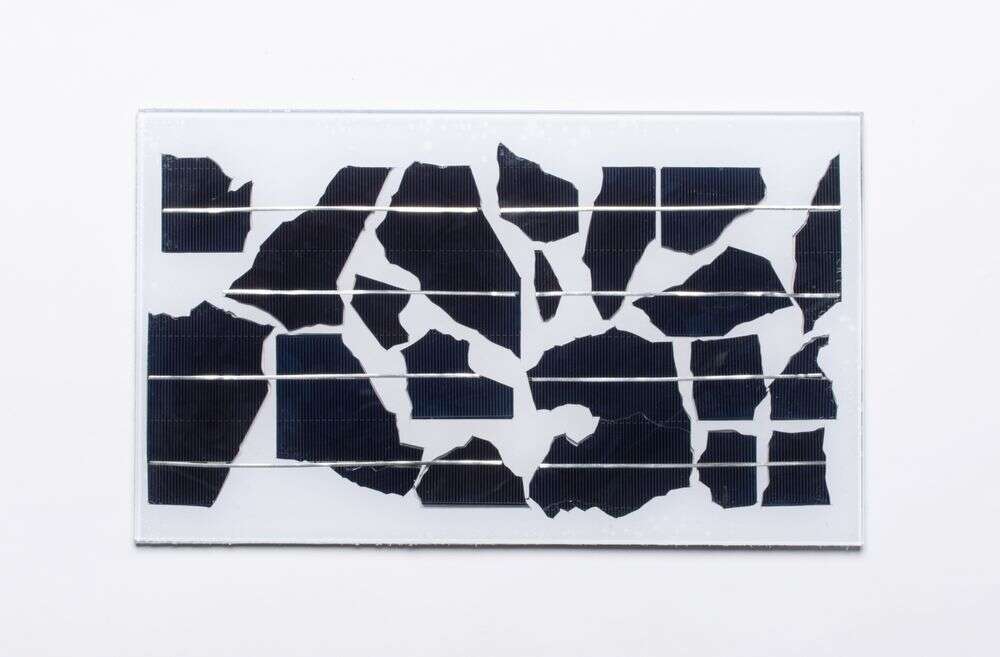
The Shard is a unique creation that demonstrates the possibilities of upcycling broken solar cells. The guiding principle for this module is to use damaged solar cells that would typically be discarded. The broken cells are scanned and then connected in a way that maximizes the energy yield. The cells are arranged in a pattern that is far from the standardized look of traditional solar panels. The resulting composition is a new picture that challenges our understanding of what a solar module can look like. The module's density and transparency can be varied, creating a range of visual effects that are as beautiful as they are innovative.
Traditional solar panel manufacturing processes create a significant amount of waste, including broken and discarded solar cells. Upcycling broken solar cells is not without its challenges. To make a module like the Shard work, it's necessary to match cell parts with similar sizes. This can be a difficult process, as broken cells often vary greatly in size and shape. But despite these challenges, the Shard sheds light on a pressing issue: The urgently needed reduction of waste material.
This module is one of the prototypes developed during the Building Integrated Photovoltaics (BIPV) Workshop at ETH Zurich, during which the students had the opportunity to freely assemble, glue, cut, laminate, solder and play with these materials, while creating new future visions for solar applications.
The CEA lab disassembled the old Fiat / Lancia Warehouse in Geneva with Materiuum and Anku - Artisans of the Great Outdoors. After building a dome with the reclaimed materials, waste material was left. These elements were integrated on the border of this stool. Anku and Müller Holzbau disassembled a rotting veranda frame, made of exotic wood. Due to the rotten part of the wood, it was thrown into the waste bin. We cut away the rotten part and discovered the beautiful red color of the original wood, which you can see in the design of the stool. The rest of the wood of this stool is also waste material from another rotten structure.
A transition to a circular economy, in which used materials may become valuable resources for a new production cycle, is urgently needed. This project aims to develop integrated frameworks and tools based on advanced digital technology for informing the design, construction and management of circular buildings and deploying more effective resource solutions. It addresses the questions of which contributions future circular cities can make to lower adverse environmental impacts and how to derive tailored, site-specific system solutions for sustainable housing.
Find out more aboutThe objective of this module is to efficiently reduce energy consumption and to increase solar energy production in cities while minimizing total greenhouse gas (GHG) emissions. The research includes the development of holistic, multi-scale and interdisciplinary approaches for assessing large scale deployment of (building integrated) photovoltaic in realistic urban contexts under different climatic, socio-economic and architectural conditions. Zurich and Singapore are used as complementary case studies and we are interacting with public stakeholders and agencies to directly apply research into practice by receiving feedback and providing training on toolboxes developed.
Find out more about